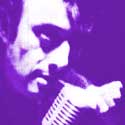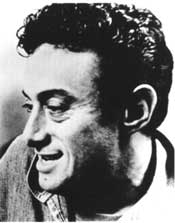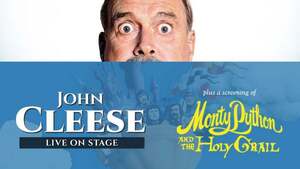
Lenny Bruce
Let the Buyer Beware
Shout! Factory

Lenny Bruce (1925-1966) was ranked as the second “Greatest Stand-Up of All Time” by Comedy Central in 2004. He was surpassed only by Richard Pryor. A debate over the relative merits of these men, in regard to that top spot, could only be done correctly if scripted by a master humorist of their stature. The “problem” of proper contextualization is complicated by the breadth and brevity of his career. The man only worked 19 years, but had an effect comparable to almost anyone, in terms of influence.
Comedy is an art form based in the science of sound and psychology. Bruce went ultra-technical on the subject in an interview with The Realist in 1959, a year in which he released four LPs and made $1,750 per week: “A comedian is one who performs words or actions of his own creation, usually before a group of people in a place of assembly . . . he should get a laugh every 25 seconds for a period of not less than 45 minutes, and accomplish this feat with consistency 18 out of 20 shows . . . If he can upgrade the moral standards of his community and still get laughs, he is a fine craftsman.” Bruce is too often characterized as a rebellious influence in American history, in large part because of how he is signified by others wishing to push envelopes; but it’s useful to see he was explicitly a part of the tradition he satirized in routines like “The Palladium.”
Everyone has their favorites: Woody Allen, Jack Benny, Milton Berle, George Burns, Johnny Carson, Bill Cosby, Redd Foxx, Richard Pryor, Jerry Seinfeld, Phil Silvers. Others were not stand-ups but nonetheless essential to the perpetuation of the craft: Lucille Ball, Dizzy Gillespie, Jerry Lewis, Groucho Marx, Richard Nixon, Ed Sullivan. Each of them contributed something of enduring value to the actual craft of comedy – the beat, timing, pacing, rhythm, to say nothing of nonverbal cues, gestures and expressions. They ran in cliques and honed the craft through relentless competition, like musicians, politicians or athletes – all of which they were.
The business has lasted for at least 100 years, when the first generation of media comics were cutting their teeth in Vaudeville. Those people worked a vicious pace long past the time their skills came automatic. Before there was any way to record or transmit the human voice, they were practicing routines that would end up on radio and television. To think hard about the difference between them only highlights how arbitrary lists like that are. Pryor lasted longer, made more albums, movies and television appearances, but Bruce stands out as the grand martyr of free speech in America, a fact recognized in 2003 by NY Governor George Pataki when he formally pardoned Bruce for a 1964 obscenity conviction that all but ended his career.
Lenny Bruce’s place in history, encapsulated, was to expand the range of subjects that could be held up for public ridicule. His was the spirit of post-war America, a place obsessed with its own vast potential and peculiarities. Bruce’s best work highlights the paradoxes developing in a rapidly expanding nation, only then getting used to the global power it had earned at war in the east – a global power, incidentally, that we are now at war in the east not only to project, but to preserve.
Even though most of the many who have been touched by his gift never had the pleasure of knowing the man, we can feel justified in appropriating his legacy for our own ends. Lenny Bruce is one of those figures around whom history coalesces. He’d have prospered into old age had he simply shut up with certain things said in certain ways, but his personality and his sense of mission made that impossible. The result is an iconic status rooted in what could be called a reverse-martyrdom complex: when he died, it became instantly clear how enormously the nation had erred. It was in the national interest to embrace his message, just as it was to embrace the Malcolm X vision of 1964, because their success would have undermined the counterculture. Both men, frankly, were radicals – radical conservatives with more raw compassion than their acolytes.

To see Lenny Bruce so archivally packaged would surely generate some emotion among those who knew him well. As a general rule, his CDs are a mixed bag: the sound quality varies, and some of them are much harder to find than others, leaving a significant gap in a career that plateaued for almost a decade. Forty years after that tragic final defeat, Shout! Factory has done a tremendous public service by anthologizing over six hours of prime material in its new box set, Let the Buyer Beware. The first thing worth mentioning is that it’s put together really well. It makes a fine coffee-table book, and would go fit nicely on a shelf alongside The Trials of Lenny Bruce, by Collins and Skover.
The liner notes (which were nominated for a Grammy award) include writings by producers Marvin Worth and Hal Wilner, Bob Dylan, Paul Krassner, Ralph J. Gleason, Bill Maher, Pryor and Bruce himself: his valuable essay “Obscenity, Narcotics and Me,” as well as a letter from 1960 in which he asks his mother to take work at a whorehouse because “I would hate to lose the second car. I’ve only three payments left!”
The recordings themselves are a flat-out treasure for fans of comedy, spoken word or social commentary, distinct art-forms that Bruce could practice simultaneously. The emphasis is placed on unreleased recordings, private tapes rescued from analog purgatory and digitized just in time to save them from the rigors of age. Many of the titles will be familiar to fans of his work, but the bits themselves are usually different versions of the ones that ended up on records. There is a distinct improvisational feel to much of this material; one gets a sense of creation, fresh and anew from a genius mind.
The material is arranged esoterically; that may be how the subject would have liked it. The easy thing would have been to just lay the whole seven and half hours out in chronological order. They could have also arranged the stuff by subject matter – religion, the law, sex, showbiz, etc. – but why? The result is sort of like pushing an existentialist approach using the tools of abstract impressionism, and it actually works!
The box opens with a perfect introduction to Bruce’s methodology, “Are There Any Niggers Here Tonight?”, followed by a radio spot and some unheard versions of classic bits, before closing with an archival clip from “Playboy’s Penthouse” with Nat Cole and Hugh Hefner. Lenny Bruce’s recorded output offers numerous opportunities to compare specific routines. Like Trane and Tricky Dick, he was obsessive about taping things. In all three cases the world is probably better off for it.
Disc two is a revelation. The morbidity of “Testing the Sony Microphone,” of knowing that whatever he started on was never finished, is balanced by the test itself; he breaks down through repetition the make and model number [” “] until he has nothing but pure sound–perhaps a nod to old acquaintance John Coltrane, who was then in his “hour-long versions of ‘My Favorite Things’” period. It follows with Bruce’s radio debut, age 23, from Arthur Godfrey’s show in October 1948, and then “Monster Routine With Hecklers,” which is the only recorded instance of Bruce being mean to someone. But the comic must defend his stage, and so it was.
Disc three begins with segments from his epic “midnight concert” at Carnegie Hall from 1961, followed by parts of his album To Is A Preposition, Come Is A Verb and more unreleased stand-up. Most of disc four was recorded in a rare morning performance for colleague Jonathan Winters. The radio spot from disc one is revisited, and then more comedy before a secret recording of an exchange with a Long Island policeman.
Disc five gets deeper into the work that got Bruce in trouble, like “Tits and Ass,” before ending with two separate clips of Lenny being busted onstage in Chicago, 1962. The dominant theory is that Bruce’s harassment was motivated more by his criticisms of Christianity, specifically Catholicism and Billy Graham’s Baptists, than any concerns over language. One can only imagine what he might say about the modern Catholic Church and their assorted problems, though he would respect the current Pope.
Disc six continues on that theme, including some phone calls to jurors in a drug case and other legal conversations. The classic bits “Christ and Moses,” “Religions, Inc.” and the infamous “Eleanor Roosevelt Had Nice Tits” appear here, as well as a radio commercial with his wife and daughter, who looks a lot like him. The box set ends on a wistful note with “I Picked On The Wrong God” and “Adolf Eichman.”
Almost all of the material was recorded at performances in New York, Chicago or San Francisco; some of it was recorded in Los Angeles, Hollywood and Berkeley. It spans from his radio debut in 1948 to his last performance in July 1966, barely a week before he died, naked on the floor of a home that was due to be foreclosed on by the end of that month. Ironic, huh, that a man who was hounded into the grave because his words were deemed gratuitous was so gratuitously violated with his body still warm? None of the media outlets were prosecuted for obscenity, though. Lucky for them.
The best epitaph would be a quote from George Pataki, on the occasion of the pardon that brought Lenny Bruce’s story full circle and sparked this recent wave of fine products available: “Freedom of speech is one of the great American values, and I hope this pardon serves as a reminder of the precious freedoms we are fighting to preserve as we continue to wage the war on terrorism.”
Retropolis LLC, 2042-A Armacoast Ave., Los Angeles, CA 90025 • Shout Factory: http://shoutfactory.com












